They both had the curves, but only the car was French.
by Wallace Wyss –
It is rare, in my experience, that a car “matches” the owner, in that it has the owner’s personality or looks.
In this case the owner stands out in my memory because I remember being dumbstruck as a lad by sight of Britain’s Jayne Mansfield, a teenager named Diana Dors (born Diana Mary Fluck). She was at the time a fledgling movie star.
Her husband at the time. Dennis Hamilton, bought this 1949 Delahaye Type 175 Roadster in Paris. He was her agent and promoter and he knew a car with curves when he saw one, so they stretched (she was just starting her movie career) and bought one of the most curvilinear cars ever created. It made for a great publicity picture.
The kicker is that the 17-year old didn’t even have a driving license at the time.
There were only 51 of that model made, but not many, if indeed more than one, had this curvy a body style, an extreme example of streamline moderne, a trend in France before the war (though this was postwar).
Diana Dors and her husband hadn’t been the ones who commissioned the swoopy coachwork. That honor went to Englishman Sir John Gaul, noted Francophile, who had ordered it so styled after the war and the mystery is why he up and sold it. Diana’s husband came across it about five years later and they drove off into the sunset for the tune of £5,000 – a hefty sum back then, probably enough to buy a small cottage in Cornwall.
The odd thing was that it was created at all because, in truth, the market for huge block long swoopy full-skirted cars had just about died. After the war, everybody was all about practical. A golden era had ended, so this was one of the last made by Saoutchik.
It had the then very trendy transparent steering wheel and elaborate bird motifs.
Diana Dors owned sold the car and bought a white Cadillac convertible, her husband rightly figuring that another flamboyant convertible would bring the newspaper photographers.
She divorced Hamilton, and married again, to actor Alan Lake, that marriage ending with his suicide.
Sadly Diana Dors died fairly young, in 1984, of ovarian cancer. Since she had sold the Delahaye years earlier, her son didn’t have the opportunity to see this car reach its multi-million dollar status but sadder yet, she had hidden her film monies in various hidden accounts under pseudonyms and failed to leave her son the account numbers or names before she died, so as one Daily Mail newspaper reporter said in effect “It’s too bad she didn’t leave him the car instead.”
When the car was sold at auction at Monterey in 2010, Alain Squindo, from RM auctions, said: “This car was made when this coachbuilt era was almost at an end, but this is one of the most spectacular and outrageous examples.”
“It is a one-off and would have been extremely expensive at the time – it is extravagant and flamboyant.”
The car had an estimate of between four million dollars and six million dollars but only fetched roughly $3 million. I think not enough people remembered Diana Dors—or at least they should have had a blow up movie poster to show alongside it.
My passion for streamline modern continues apace. Currently wearing my art hat in preparation for stocking my Art & Books booth at Concorso Italiano, I’ll be bringing a painting or two of this car, which except for the prominent nose, is to me the a very fine example of Streamline Moderne the two best being the Mullin Museum’s 165 Delahaye and the Petersen Museum’s ex-Shah of Iran Bugatti.
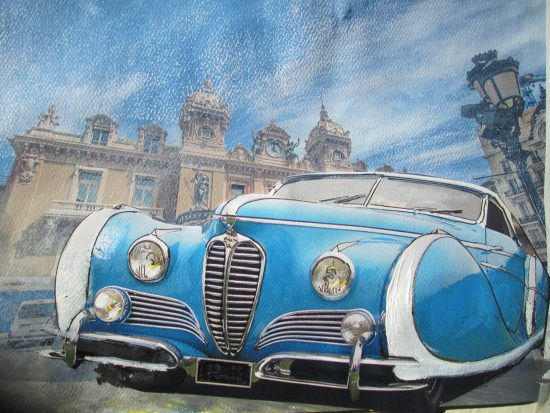
Art by Wallace Wyss –
Wyss says: “These cars look like they’ll do 120 mph but in fact can only do about 75 mph. I’ll be depicting more ‘full skirt’ cars when I find good reference.
Let us know what you think in the Comments.
THE AUTHOR/ARTIST: Wallace Wyss has authored 18 books. For a list of his available artwork, write Photojournalistpro2@gmail.com.
Diana Dors
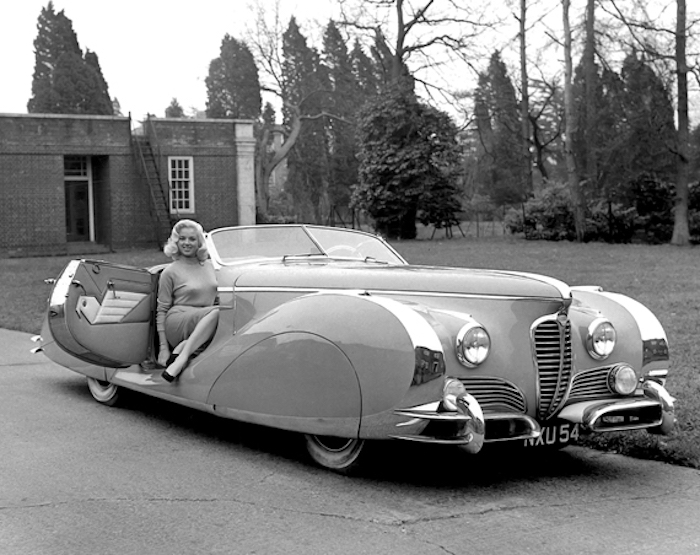

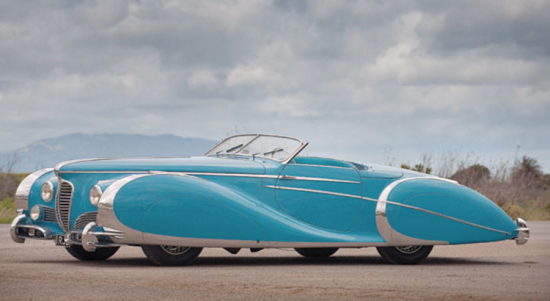
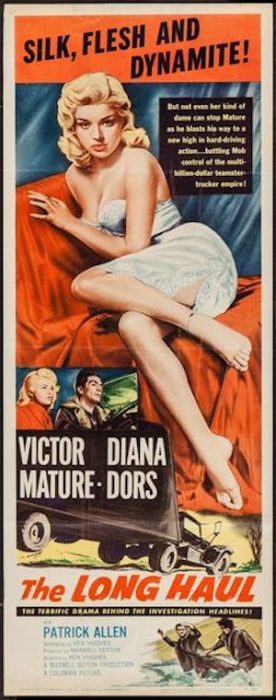
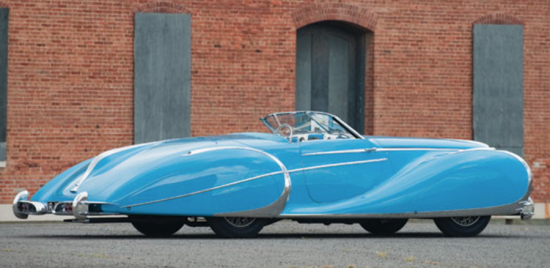
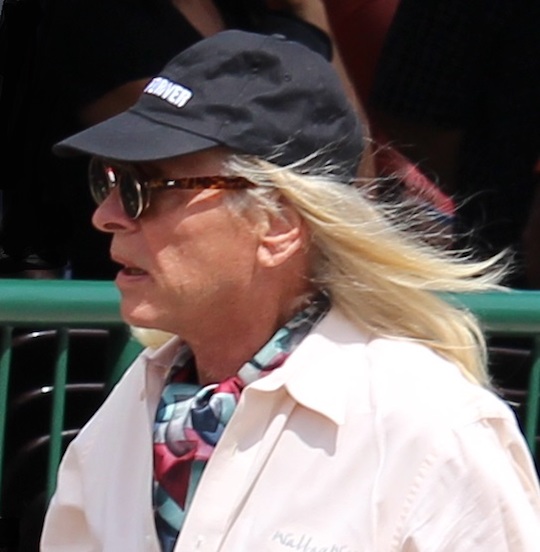



Hamilton (her husband when they married in 1951) was a crook, taking far too much of her money for himself before she divorced him. Dors was 20 when they were married (not 17) and had just been through a traumatic ordeal with her (former) boyfriend who was jailed when Dors became pregnant, leaving her to have an abortion. Hamilton, both promoter and thief, bought the car with intent to use it for publicity. Dors insisted she keep the car when they divorced as partial compensation for having take far too much of her movie and pin-up earnings. A tragic story in many ways – but for the upside that the car was preserved and not lost as so many of these cars tend to have happen.
Thank you for your input. From a publicity standpoint alone, like I say, it was the ideal pairing of a shapely female with a shapely car. I notice that Beyoncé recently had a video made of driving around an old Silver Cloud drophead coupe, so here we are six decades later and celebs are still trying to buy the right car to reflect the right image with few succeeding (maybe Ferrari’s custom program where they design a car to the celeb’s wishes like the one they did for Eric Clapton is a successful promo for the celeb and the car company. ) Those who distain from buying a car that has a famous person in their past should be thankful because, as you say, sometimes that’s the only reason the car was not scrapped earlier (“They say this belonged to Tom Mix, yadda yadda). The problem is when the celebrity is completely forgotten, then that claim to fame fails to save it from the crusher…